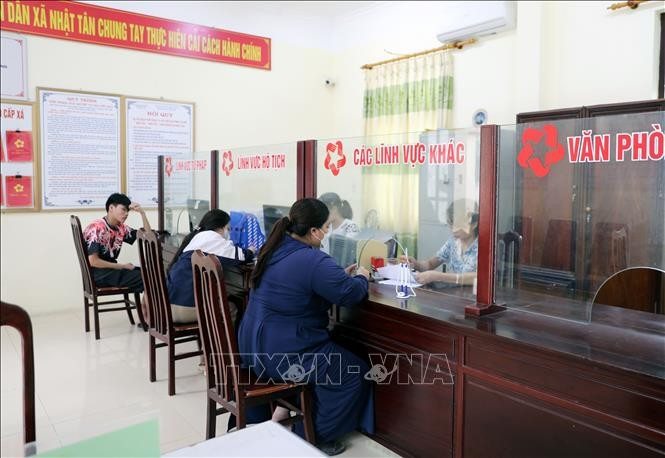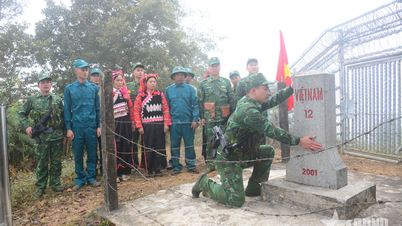
Pursuant to Conclusion No. 126-KL/TW dated February 14, 2025, Conclusion No. 127-KL/TW dated February 28, 2025, Conclusion No. 130-KL/TW dated March 14, 2025 of the Politburo and the Secretariat; Document No. 43-CV/BCĐ dated March 20, 2025 of the Central Steering Committee on summarizing Resolution No. 18, Document No. 13694-CV/VPTW dated March 7, 2025 of the Central Party Office; Based on the Project on the arrangement of administrative units (AUD) at all levels and the construction of a 2-level local government model of the Government, which has been reported to the Politburo for consideration, agreed upon in principle, and received comments from the Provincial Party Committees, City Party Committees, and Party Committees of central agencies, the Ministry of Home Affairs drafted a Resolution of the National Assembly Standing Committee on the arrangement of AUD (hereinafter referred to as the Resolution). The Ministry of Home Affairs reported to the Government on this draft Resolution.
Implementing the conclusions of the Politburo on "merging some provincial-level units, not organizing the district level, merging some commune-level units", the draft Resolution stipulates the criteria for arranging provincial-level and commune-level administrative units in the direction of closely following the 6 criteria that have been considered and agreed upon by the Politburo, including: Natural area; Population size; Criteria on history, tradition, culture, religion, ethnicity; Criteria on geo-economics (including criteria on geographical location, scale and level of economic development); Criteria on geopolitics; Criteria on national defense and security.
In particular, the criteria of natural area and population size are determined according to the provisions of Resolution No. 1211/2016/UBTVQH13 (amended and supplemented in Resolution No. 27/2022/UBTVQH15). At the same time, the draft Resolution also stipulates that arrangements will not be made for administrative units with isolated locations and difficult to organize convenient traffic connections or administrative units with especially important locations, affecting national defense, security and the protection of national sovereignty.
Based on the criteria specified in Article 1 of the draft Resolution, there are 52 provincial-level administrative units implementing the arrangement, including 4 cities: Hai Phong, Ho Chi Minh City, Da Nang, Can Tho and 48 provinces: Ha Nam, Hung Yen, Vinh Phuc, Bac Ninh, Thai Binh, Hai Duong, Nam Dinh, Ninh Binh, Bac Kan, Thai Nguyen, Phu Tho, Bac Giang, Hoa Binh, Tuyen Quang, Lao Cai, Yen Bai, Ha Giang, Ninh Thuan, Quang Tri, Phu Yen, Quang Binh, Quang Ngai, Khanh Hoa, Dak Nong, Tay Ninh, Binh Duong, Binh Thuan, Binh Phuoc, Ba Ria - Vung Tau, Ben Tre, Bac Lieu, Vinh Long, Hau Giang, Tra Vinh, Tien Giang, Soc Trang, Dong Thap, An Giang, Long An, Ca Mau, Quang Nam, Binh Dinh, Dak Lak, Dong Nai, Gia Lai, Kon Tum, Lam Dong, Kien Giang.
11 provincial-level administrative units that did not implement the arrangement include: Hanoi City, Hue City, Lai Chau, Dien Bien, Son La, Lang Son, Quang Ninh, Thanh Hoa, Nghe An, Ha Tinh.
At the commune level, nationwide there are about 9,996/10,035 commune-level administrative units subject to rearrangement.
To implement the policy of arranging administrative units to expand new development space, the draft Resolution only stipulates the standards of natural area and population size for administrative units formed after the arrangement; it does not consider the conditions of ensuring conformity with planning and meeting other standards of administrative units when arranging according to this Resolution.
To facilitate the process of arranging administrative units in accordance with local practical conditions, the draft Resolution stipulates that in the case of merging 4 or more administrative units of the same level, the new administrative units after the arrangement are not required to meet the standards of natural area and population size as prescribed; at the same time, it stipulates that the total number of communes and wards after the arrangement of provinces and cities must be reduced by at least 70% and reduced by a maximum of 75% compared to the total number of current commune-level administrative units in the province or centrally run city.
In addition to the above contents, Chapter I of the draft Resolution specifically stipulates the data source on natural area and population size of administrative units to carry out the arrangement (Article 7); principles for naming new commune-level administrative units after the arrangement (Article 8), in which it is encouraged to name communes and wards according to the serial number or the name of the district-level administrative unit (before the arrangement) with the serial number attached to facilitate the digitization and updating of information data.
Source: https://daibieunhandan.vn/khong-thuc-hien-sap-xep-don-vi-hanh-chinh-co-vi-tri-biet-lap-kho-to-chuc-giao-thong-post408350.html























![[Photo] General Secretary To Lam begins official visit to Russia and attends the 80th Anniversary of Victory over Fascism](https://vphoto.vietnam.vn/thumb/1200x675/vietnam/resource/IMAGE/2025/5/8/5d2566d7f67d4a1e9b88bc677831ec9d)
![[Photo] Prime Minister Pham Minh Chinh meets with the Policy Advisory Council on Private Economic Development](https://vphoto.vietnam.vn/thumb/1200x675/vietnam/resource/IMAGE/2025/5/8/387da60b85cc489ab2aed8442fc3b14a)









































































Comment (0)